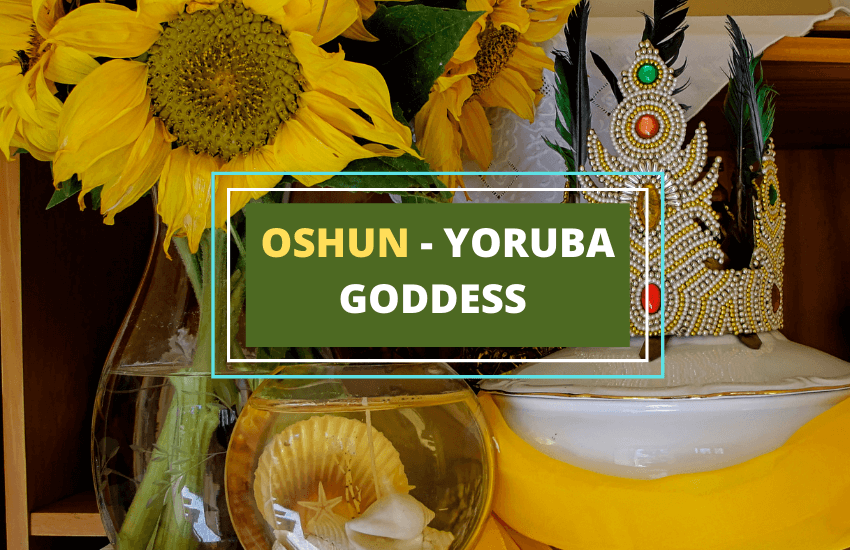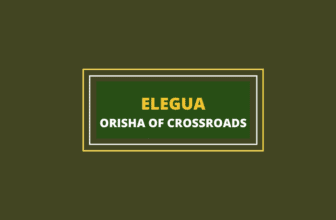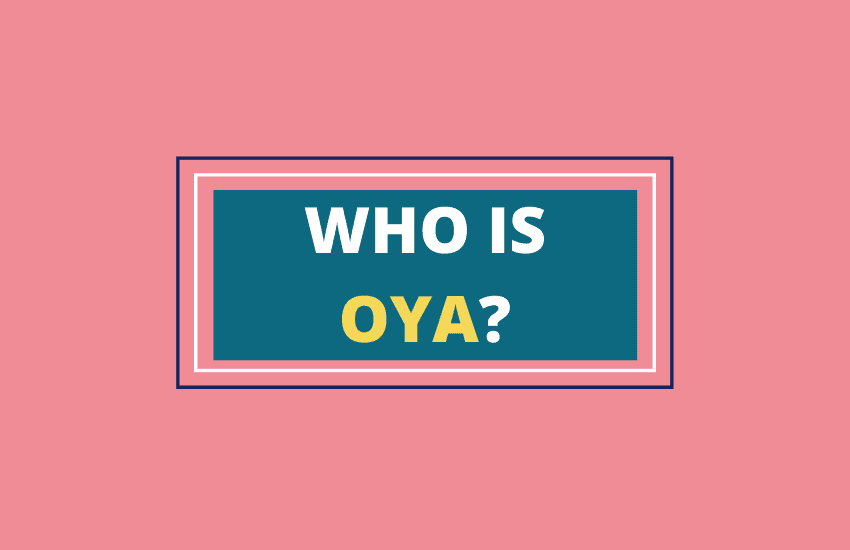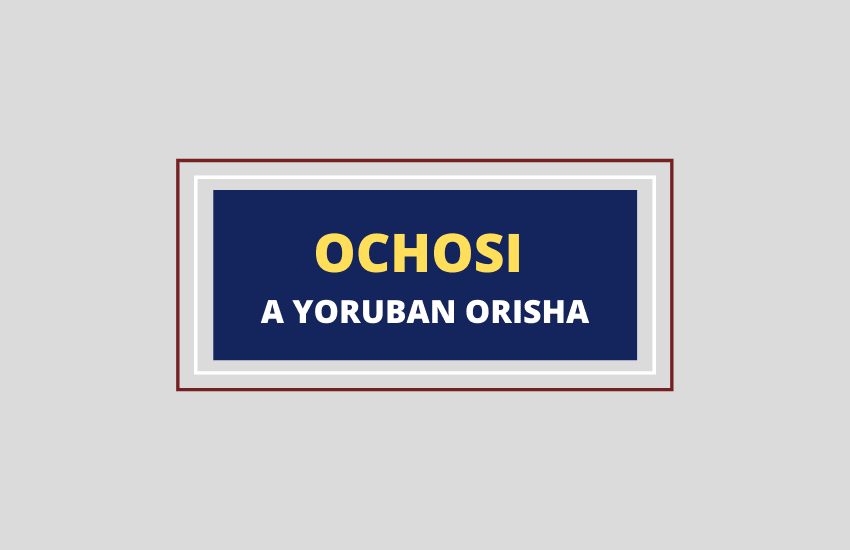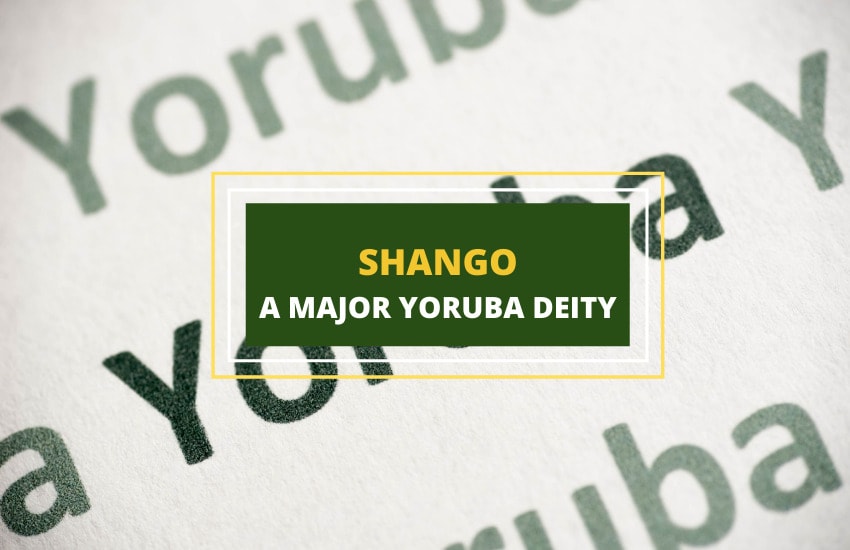
Shango is the ax-wielding Orisha of thunder and lightning worshipped by the Yoruba people of West Africa and their descendants scattered among the Americas. Also known as Chango or Xango, he is one of the most powerful deities of the Yoruba religion.
Shango as a Historical Person
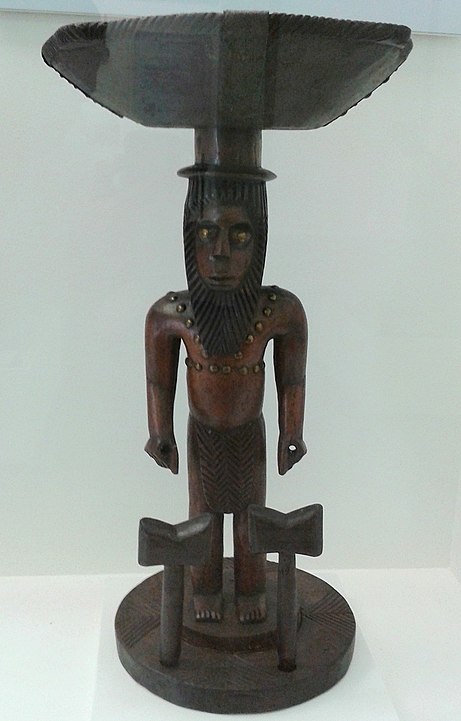
African religions rely heavily on invoking the blessing of ancestors. In this tradition significant persons are deified, reaching the status of a god. Perhaps none are more powerful in the religion of the Yoruba people than Shango, god of thunder and lightning.
The Oyo Empire was the most powerful of the political groups in Yorubaland, the geographical homeland of the Yoruba people living in present-day Togo, Benin, and Western Nigeria. The empire existed during the same time as the medieval period in Europe and beyond, and it continued into the 19th century. Shango was the fourth Alaafin, or king, of the Oyo Empire, Alaafin being a Yoruba word meaning “Owner of the Palace“.
As Alaafin, Shango is described as a stern, exacting, and even violent ruler. Ongoing military campaigns and conquests marked his reign. As a result, the empire also enjoyed a time of great prosperity during his seven years of rule.
We’re given an insight into the type of ruler he was in a story that details the accidental burning down of his palace. According to the legend, Shango became enamored with the magical arts, and in anger, misused the magic he had acquired. He called down lightning, inadvertently killing some of his wives and children.
The burning of his palace was also the cause for the end of his reign. Of his many wives and concubines, Queen Oshu, Queen Oba, and Queen Oya were the three most significant. These three are also venerated as important Orishas, or gods, among the Yoruba people.
Deification and Worship of Shango
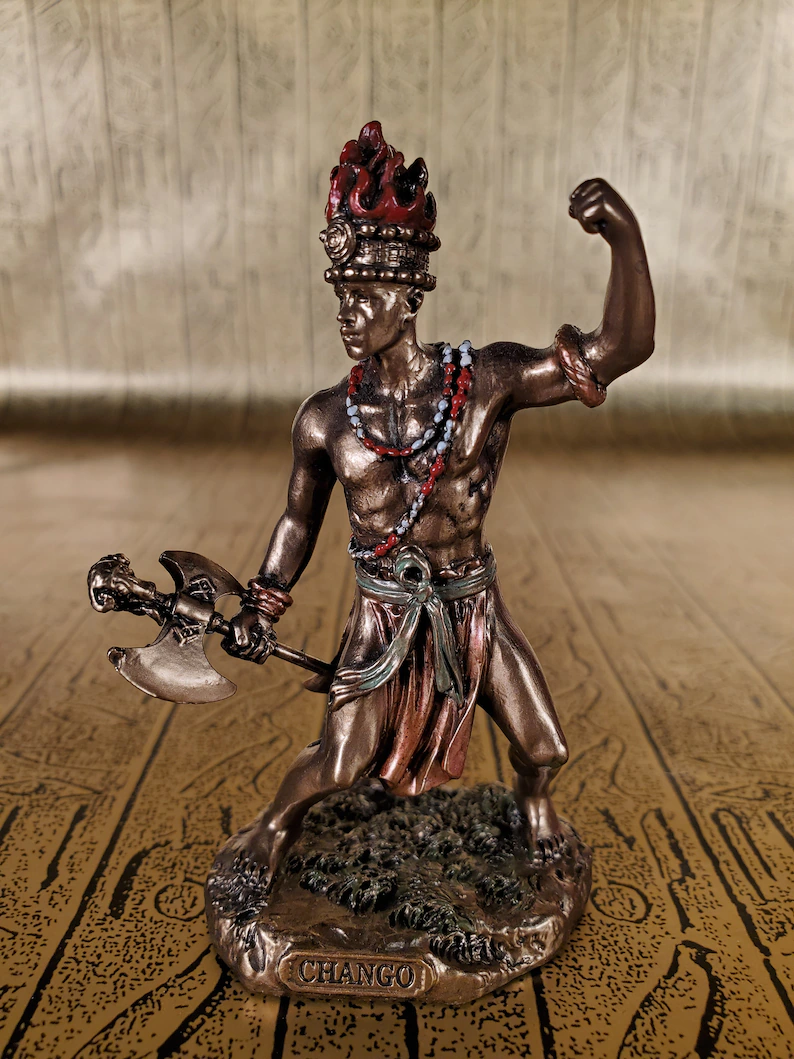
Shango is the most powerful of the Orishas among the pantheon worshiped by the people of Yorubaland. He is the god of thunder and lightning, consistent with the legend of his demise. He is also the god of war.
As with most other polytheistic religions, these three attributes tend to go together. He is known for his strength, power, and aggression.
Among the Yoruba, he is traditionally worshipped on the fifth day of the week. The color most associated with him is red, and depictions show him wielding a large and imposing ax as a weapon.
Oshu, Oba, and Oya are also important Orishas for the Yoruba people.
- Oshu is connected with the Osun River in Nigeria and is venerated as the Orisha of femininity and love.
- Oba is the Orisha connected to the Oba River and is the senior wife of Shango. According to legend, one of the other wives tricked her into cutting off her ear and trying to feed it to Shango.
- Finally, Oya is the Orisha of winds, violent storms, and death. All three are prominent in the African diaspora religions as well.
Shango African Diaspora Religions
Starting in the 17th century, many Yoruba people were taken captive as part of the Atlantic slave trade and brought to the Americas to work as slaves on plantations. They brought with them their traditional worship and gods.
Over time, these religious beliefs and practices mixed with the Christianity imported by Europeans, specifically Roman Catholic missionaries. The mixing of traditional, ethnic religions with Christianity is known as syncretism. Several forms of syncretism have developed in various parts of the Americas in the subsequent centuries.
Shango in Santeria
Santeria is a syncretic religion originating in Cuba in the 19th century. It combines Yoruba religion, Roman Catholicism, and elements of Spiritism.
One of the primary syncretistic elements of Santeria is the equating of Orichas (spelled differently from the Yoruba Orisha) with Roman Catholic saints. Shango, known here as Chango, is associated with Saint Barbara and Saint Jerome.
Saint Barbara is a somewhat shrouded figure associated with Orthodox Christianity. She was a third-century Lebanese martyr, though due to doubts about the veracity of her story, she no longer has an official feast day on the Roman Catholic calendar. She was the patron saint of the military, especially among artillerymen, along with those who risk sudden death at work. She is invoked against thunder, lightning, and explosions.
Saint Jerome is a far more significant person in Roman Catholicism, responsible for translating the Bible into Latin. This translation, known as the Vulgate, would become the official translation of the Roman Catholic Church through the Middle Ages. He is the patron saint of archaeologists and libraries.
Shango in Candomblé
In Brazil, the syncretic religion of Candomblé is a mix of Yoruba religion and Roman Catholicism coming from the Portuguese. Practitioners venerate spirits called orixás who exhibit specific attributes.
These spirits are subservient to the transcendent creator deity Oludumaré. The orixás take their names from traditional Yoruba deities. For example, in Yoruba the creator is Olorun.
Candomblé is most associated with Recife, the capital of the state of Pernambuco on the eastern tip of Brazil which was once ruled by the Portuguese.
Shango in Trinidad and Tobago
The word Shango is synonymous with the syncretic religion that developed in Trinidad. It has similar practices with Santeria and Candomblé while venerating Xango as the chief orisha in the pantheon.
Shango in America
One interesting development of these syncretic religions in America is the ascension of Shango to prominence. In the traditional religion of Yorubaland, one of the essential Orishas is Oko (also spelled Oco), the god of farming and agriculture. While Oko was syncretized with Saint Isidore in Santeria, the Yoruba descendants working as slaves on the plantations minimized his significance.
These same people elevated Shango, the violent Orisha of thunder, power, and war. Unsurprisingly, slaves are far more interested in gaining power than in agricultural prosperity.
Shango in Modern Culture
Shango does not appear in pop culture in any significant way. There is a theory that Marvel based its depiction of the Norse god Thor on Shango, but this is difficult to corroborate since both are gods of war, thunder, and lightning in their respective traditions.
Wrapping Up
Shango is an important deity among the many African diaspora religions throughout the Americas. With the roots of his worship among the Yoruba people of West Africa, he grew in prominence among slaves working on plantations. He continues to be a significant figure in the religion of the Yoruba people and in syncretic religions such as Santeria.




